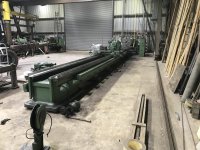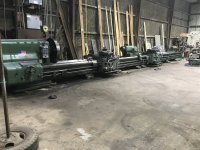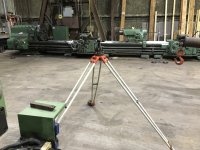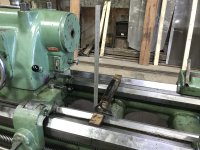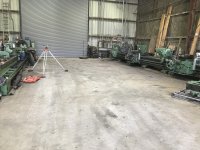jackie schmidt
New member
The truck with our new Lathe and two machinery movers showed up at 6:00 AM this morning. The movers came equipped with a 100,000 lb fork truck, a 10,000 pound fork truck, and a couple of machinery rollers.
They moved the old Lathe out ito position in the shopThey then put the new Lathe on the truck that brought in the fork trucks. They lifted the old Lathe, drove the truck under it, and he was loaded and ready to head back to Chicago.
They then drove the truck with the new Lathe on board into the shop and picked it up and set it right down where we wanted it.
Watching these two guys work was a pleasure. They knew exactly what they were doing. The entire loading and moving was done by noon.
I’m going to level the Lathe tomorrow, my brothers will hook it up, and have it running.
Here are some pictures.
http://benchrest.com/attachment.php?attachmentid=23159&stc=1&d=1575592823
They moved the old Lathe out ito position in the shopThey then put the new Lathe on the truck that brought in the fork trucks. They lifted the old Lathe, drove the truck under it, and he was loaded and ready to head back to Chicago.
They then drove the truck with the new Lathe on board into the shop and picked it up and set it right down where we wanted it.
Watching these two guys work was a pleasure. They knew exactly what they were doing. The entire loading and moving was done by noon.
I’m going to level the Lathe tomorrow, my brothers will hook it up, and have it running.
Here are some pictures.
http://benchrest.com/attachment.php?attachmentid=23159&stc=1&d=1575592823
Attachments
-
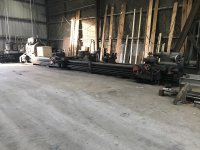 7C6BAE29-B20D-4E1F-BEF8-CD7724AFB49F.jpeg2.9 MB · Views: 1,392
7C6BAE29-B20D-4E1F-BEF8-CD7724AFB49F.jpeg2.9 MB · Views: 1,392 -
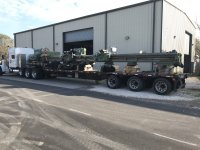 CCA1A363-2C58-478E-910C-B0997141BAAB.jpeg3.2 MB · Views: 1,403
CCA1A363-2C58-478E-910C-B0997141BAAB.jpeg3.2 MB · Views: 1,403 -
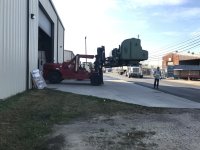 31E61548-2B27-4815-AB2E-AA93D9285E0E.jpeg3.1 MB · Views: 1,963
31E61548-2B27-4815-AB2E-AA93D9285E0E.jpeg3.1 MB · Views: 1,963 -
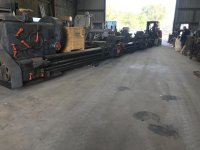 B2F4A4C5-C9A8-4970-898F-D40065080635.jpeg2.2 MB · Views: 1,449
B2F4A4C5-C9A8-4970-898F-D40065080635.jpeg2.2 MB · Views: 1,449 -
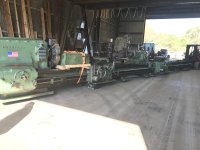 8533D66F-FEF8-4825-BA0D-3B9A30B5B70B.jpeg2.3 MB · Views: 1,246
8533D66F-FEF8-4825-BA0D-3B9A30B5B70B.jpeg2.3 MB · Views: 1,246
Last edited:


